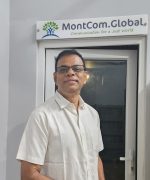By Margarete Mary
Kohima, April 18, 2020: When I was transferred to Nagaland, a mountainous state in northeastern India, bordering Myanmar, I was anxious due to language.
One of the nuns in my Congregation of the Sisters of the Little Flower of Bethany (also known as Bethany Sisters), told me, “Dear sister, do not worry.”
“You will like to work in Nagaland even if you do not know how to speak fluently the local language (Nagamese) of the place and people. You will like to come back from any place to work here,” she said.
This initial hesitation was natural as most of the years as a nun, I worked in West Bengal. However, with fear, I came to Nagaland, home to diverse (about 30) indigenous tribes, with festivals and markets celebrating the different tribes’ culture.
[In the past, I had been in all the states of North East India, except in Manipur, Arunachal Pradesh, and Sikkim.]
Over the years, I found people of Nagaland are approachable, loving, understanding, generous, and cooperative.
I noticed that most people speak English, which is the official language of Nagaland and 79.55% (2011 census) of the population is literate. English is the medium of education in schools and colleges.
Thankfully, my initial worry and fear steadily disappeared. That gave me confidence that I could work smoothly in school, parish, and villages at times during holidays.
I tried to speak in Nagamese, which has its origin from the interaction of the hill Naga people with the Indigenous Assamese people in the plains and developed primarily as a market language to communicate for trade. It is the preferred form of communication for extension works in rural areas and mixed households.
Nagamese shares a large part of its lexicon with the Assamese. In general all people in Nagaland can speak it, but each tribe has its language or dialect, For example, Angami is for the Angami tribe.
Every time, I make mistakes, while speaking Nagamese, people around me would never laugh at it. They would rather politely correct me according to the context. That encourages me to learn more about it.
This is the sixth year that I am here. Though I have not become so fluent in Nagamese, I have felt at ease to work with Naga people.
Now, the same nun, about whom I referred to earlier at the beginning of this write-up, said to me, “It is nice to work here in Nagaland.” I could not agree more. My response to her was, “It is true.”
Over the years, Bethany Sisters have established a good rapport with the people around us since through various ministries of education, social work, and healthcare.
They started to work here in 1969 when there were only thick forests and education was zero. In those days, they are called head hunters. This has changed with time.
Bethany Sisters started medical services in four villagers. Some nuns began teaching young kids in small huts in those days.
They were the first women religious congregation to come to Kohima, which is now the capital of Nagaland. Today people are civilized well and well settled. And the nuns collaborate with other priests and nuns around the region.
Kohima has a historical background due to World War II. In one of the villages here, Khonoma by name during the war, bodies were buried there. And due to these burials, the place is known as a war cemetery.
Today thousands of people from far and wide come to visit this place during the Hornbill carnival, which is the State feast in Nagaland. All institutes remain closed during that event. Ministers from the federal government and tourists across the country reach here for this festive occasion.
People of Nagaland are born singers and musicians. They love to play football and wrestling. They are friendly, generous, and hard-working. People are God-fearing as well.
In Kohima, I never saw any beggar, not even one. In the time of sickness or death, I cannot even imagine their helpfulness and generosity to each other. It is an inner trait to support people in need.
People are strong in a time of disaster. They are conscious regarding the reception of sacraments and eager to volunteer to render their time, talent and treasure for religious activities. They have love religious personnel—missionaries, priests, and nuns. We have experienced the support of our needs.
The people of Nagaland are grateful for the services of missionaries who render to them regarding pastoral care, health service, and education.
Due to the contribution of Bethany Sisters and others, the State has many professionals such as doctors, engineers, and civil authorities in government offices and the private sector.
They say that the development of people in the areas is due to the contribution of religious people in the past years.
I feel so proud indeed for my fellow missionaries, who worked in those years, often with limited resources or facilities.
Most institutes of education, medical, social work, and pastoral work of churches in the region had humble origins and had faced daunting challenges. It is glad to note that their yeoman service is paving a way for the glory of God and the witnessing the life of a missionary is beneficial to people at large.
When I look back, in the scheme of God’s work in the North East, especially in Nagaland, I am humbled by His grace in my life and enriched by people’s love and support, even if I am not so confident to speak the Nagamese or languages of different tribes. What drives me as an unworthy servant or an instrument of God’s work is the ‘language of love’ through which I communicate with others and render my service to people in my given responsibility.
[Margarete Mary is a member of the Congregation of the Sisters of the Little Flower of Bethany. She is a teacher at Christ King Higher Secondary School, Kohima, Nagaland.]










